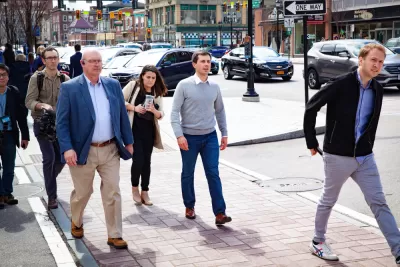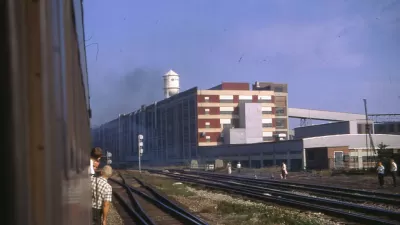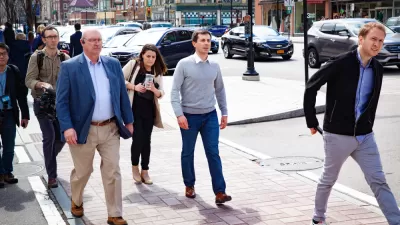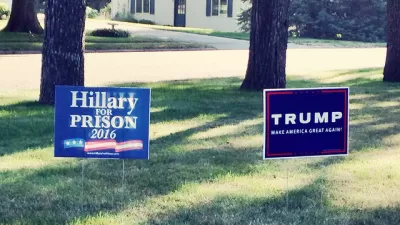South Bend Mayor Pete Buttigieg is hoping to ride a track record of urban revitalization success to the Oval Office.

Patrick Sisson analyzes the track of South Bend Mayor Pete Buttigieg, who recently announced a campaign for the Democratic nomination for president.
Buttigieg's supporters often lionize him for helping to revive a dying town—a characterization many locals take issue with—or getting people to believe in South Bend again. But his impact on the northeast Indiana city, known by many as the current home of Notre Dame and the former home of Studebaker, has been a little more nuanced.
An analysis of his time in office does shows the millennial mayor adopting, and often successfully implementing, the contemporary strategies experts point to when advising locals on how to (re)build better urban communities.
Sisson's analysis is organized in the following categories, with a lot more detail included in the article.
- Placemaking and street redesign helped revitalize downtown
- Turning vacant lots into new development
- Building an economic base for the future
Planetizen is not endorsing Buttigieg’s candidacy for president, but continuing an ongoing effort to highlight the position of housing policy in the upcoming presidential election. Previous posts have focused on the campaign platforms of Senators Elizabeth Warren (D-Massachusetts), Corey Booker (D-New Jersey), and Kamala Harris (D-California).
- Kamala Harris Reintroduces 'Rent Relief Act'
- Elizabeth Warren Makes Housing a Cornerstone of Presidential Bid
- How the Next President Might Take on the Housing Crisis
- Democratic Presidential Contenders May Elevate Housing Policy
- Debating a Renters' Tax Credit at the Federal Level
Planetizen has been closely monitoring federal housing policy under the Trump administration, mostly organized under the U.S. Department of Housing and Urban Development tag.
FULL STORY: How Mayor Pete used good urbanism to revitalize South Bend

Maui's Vacation Rental Debate Turns Ugly
Verbal attacks, misinformation campaigns and fistfights plague a high-stakes debate to convert thousands of vacation rentals into long-term housing.

Planetizen Federal Action Tracker
A weekly monitor of how Trump’s orders and actions are impacting planners and planning in America.

In Urban Planning, AI Prompting Could be the New Design Thinking
Creativity has long been key to great urban design. What if we see AI as our new creative partner?

Portland Raises Parking Fees to Pay for Street Maintenance
The city is struggling to bridge a massive budget gap at the Bureau of Transportation, which largely depleted its reserves during the Civd-19 pandemic.

Spokane Mayor Introduces Housing Reforms Package
Mayor Lisa Brown’s proposals include deferring or waiving some development fees to encourage more affordable housing development.

Houston Mayor Kills Another Bike Lane
The mayor rejected a proposed bike lane in the Montrose district in keeping with his pledge to maintain car lanes.
Urban Design for Planners 1: Software Tools
This six-course series explores essential urban design concepts using open source software and equips planners with the tools they need to participate fully in the urban design process.
Planning for Universal Design
Learn the tools for implementing Universal Design in planning regulations.
Gallatin County Department of Planning & Community Development
Heyer Gruel & Associates PA
JM Goldson LLC
City of Camden Redevelopment Agency
City of Astoria
Transportation Research & Education Center (TREC) at Portland State University
Jefferson Parish Government
Camden Redevelopment Agency
City of Claremont





























